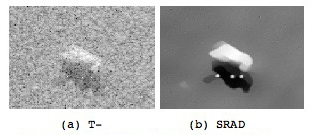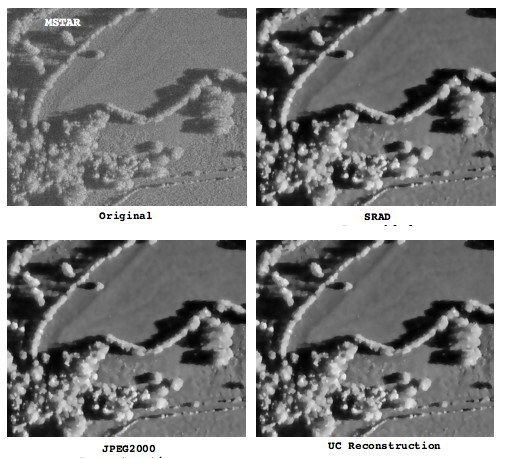




|
Synthetic Aperture Radar (SAR) Despeckling and Compression UtopiaCompression Corporation (UC) has considerable expertise in developing Synthetic Aperture Radar (SAR) data manipulation and compression technology. Indeed this expertise is being developed and put to test for the F-22 Program Office to support and enhance real-time ground attack capability of F-22. Through our SAR R&D programs, we are developing novel methods for speckle removal in SAR. The Speckle Reducing Anisotropic Diffusion (SRAD) algorithm is a Partial Differential Equation (PDE) approach to speckle removal for SAR image enhancement. It suppresses speckle and enhances edges by inhibiting diffusion across edges and allowing isotropic diffusion in intra-regions. For images containing signal-dependent, spatially correlated multiplicative noise, SRAD excels over the adaptive speckle filters and conventional anisotropic diffusion techniques designed with additive noise models in mind. Experimental Results 
Original and smoothened clutter images obtained by the SRAD filter 
Original and the SRAD processed image of a military target (T-72 tank) This despeckling method has been applied and incorporated in UCís pattern driven data compression technology. It can be seen that UC codec outperforms JPEG2000 quite handsomely.
Comparison of UC codec and JPEG2000 on MSTAR images despeckled by the SRAD method 
Reconstruction results from UC codec and JPEG2000 on a SRAD despeckled MSTAR image at quality above 42 dB | ||||||||||||||||||||
Home | Company | Research and Development | Careers | News | Contact
© 2007 UtopiaCompression. All Rights Reserved.